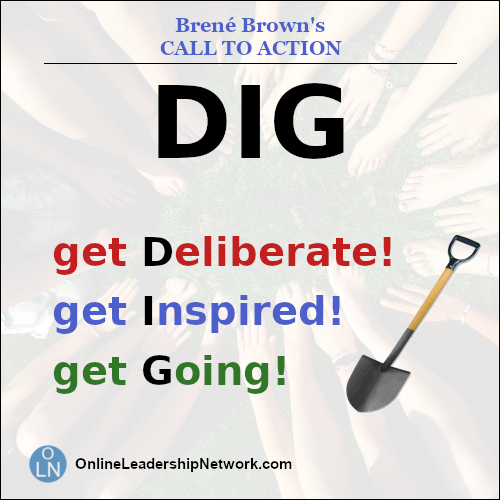Brené Brown’s The Gifts of Imperfection: 10th Anniversary Edition.
When I was at Royal Roads University doing my Graduate Certificate in Values-Based Leadership, many of my cohorts were talking about an author Brené Brown. Following my residency, I decided to purchase one of her books: Dare to Lead: Brave Work. Tough Conversations. Whole Hearts.
After reading it, I became an instant fan. Brené is an excellent writer, a great speaker (I watched some of her videos on YouTube) and most importantly – she is authentic.
I never had the opportunity to read the original The Gifts of Imperfection. However, when I heard she was re-releasing that book, I knew I had to read it then. Furthermore, I knew that I also wanted to write a review and identify some take-away points, because actionables are an important part of putting theory into practice. From reading her books and watching her videos, I can say with confidence that she shares the same philosophy.
Here is my book review and take away points for The Gifts of Imperfection: 10th Anniversary Edition.
THE REVIEW
First of all, Brené Brown did not disappoint! Even though this book was re-released for its 10th anniversary, it has just as much relevance today as it did then, and I suspect it will be relevant for years, even decades, to come.
With an updated foreword that is very relevant in today’s society and where we are at in terms of racial injustice, Brené sets the tone for her book that draws in new readers into this updated edition. She combines her knowledge of shame research and vulnerability literature, along with her unique style of a mixture of humour, intellect and real-life experience that engages the reader from beginning to end.
Brené also writes about ten guideposts for living your life whole-heatedly. She talks about these guideposts both independently of each other, as well as how they can work together to enhance one’s life.
These guideposts include: Cultivating Calm and Stillness: Letting Go of Anxiety as a Lifestyle, Cultivating Meaningful Work: Letting Go of Self-Doubt and “Supposed to”, and Cultivating Authenticity: Letting Go of What People Think.
For each guidepost, she also provides a call to action using the acronym D.I.G. (get Deliberate, get Inspired and get Going).
Whether you are a new leader, aspiring leader or anyone in general, this book is an excellent read. You will learn much in the way of both theory and how to put that theory into practice.
TAKE AWAY POINTS!
The following list is just a few of the take away points I got from the book. As you read The Gifts of Imperfection: 10th Anniversary Edition, I am certain that you will find some points you can build upon for yourself and put into practice. These points are in no particular order and I will integrate them with what I have learned over the years.
1. Shame vs. Guilt
This one hit me like a ton of bricks, even though I use this concept with clients and with other people in my life frequently.
Shame is when you put yourself or others down (e.g. “I am stupid!” or “You’re lazy!”) whereas with guilt, you are addressing a behavior (e.g. “I slammed on the breaks too late!” or “You haven’t done housework for over a week.”)
Guilt is fine. It is important to separate behaviors from the person. People are more likely to react negatively to being shamed as opposed to feeling guilty. When I would do this with the clients, we referred to this as externalization. In short, shame attacks the person while guilt addresses the behavior.
2. Empathy vs. Sympathy
The concept of sympathy vs. empathy is not new to me, however I think this is a very important concept to share as I have seen many people confuse these two terms.
Sympathy is feeling sorry for someone while empathy requires you to connect with someone where they are at. Examples of sympathetic statements include: “It will be ok”, or “I feel sorry for you.” Examples of empathetic statements include: “I get it”, or “It takes a lot of courage to go through what you are dealing with.”
“Compassion is not a relationship between a healer and a wounded. It’s a relationship between equals.” – Brené Brown
Empathetic statements allow you to connect with others on an emotional level. Sympathetic statements are well-intended but generally miss the mark. I have often heard that sympathy means that you “feel for” someone while empathy means you “feel with” someone.
3. Cultivating Authenticity: Letting Go of What People Think
This one is about allowing your true self shine through and show it to others in a world that constantly teaches us not to be vulnerable; even sometimes encouraging us not to understand who we really are.
Brené writes about fitting in vs. belonging. We all like to fit in; however, this this causes us to hide who we and in the end we do not feel good about ourselves because we are not being authentic.
When we are being authentic and find a group that accepts us for who we are, we go beyond fitting in and we belong to that group or embrace that friendship on a deeper level.
From a new leader perspective, ask yourself if you are doing things to fit in with your team or are you being authentic so that your team accepts you for who you are? Even leaders want to belong. By belonging to your team, you will build trust and respect much faster than if you just try and fit in.
“If we want to fully experience love and belonging, we must believe we are worthy of love and belonging.” – Brené Brown
4. Cultivating a Resilient Spirit: Letting Go of Numbing and Powerlessness
Resilience is a hot topic of conversation in the mental health field as it speaks to a person’s ability to bounce back from stressful and traumatic situations. From her research, Brené has found that resilience is always paired with spirituality when talked about.
The type of spirituality she is referring to is not religion, though that does occasionally come up. She defines spirituality, based on her research, as having two components.
First, people are connected to something bigger than themselves and secondly, people are connected with each other through love. When we develop a resilient spirit, we no longer feel the need to numb our negative feelings. We can identify these feelings, ask for help, figure out what to do and rely on others to help out when needed.
One interesting concept she reveals is that we cannot numb our negative feelings without numbing the positive ones. When I read this, I thought of medications that numb people’s feeling (e.g. anti-depressants and anti-anxiety). All feelings are numbed, both positive and negative.
I find that being a leader can be very stressful and we need to learn not to numb our emotions. We need to engage in self-care and encourage our teams to do the same. This practice creates resilience within people and consequently both leaders and team members can be empowered to be their authentic selves.
TIP FOR INTEGRATING THEORY INTO PRACTICE
In the foreword of The Gifts of Imperfection: 10th Anniversary Edition, Brené gives a great tip on how to transform theory into practice. She calls it the “Integration Index”. This is a good way to track your learning and turn that theory into practice.
For example, you can have an index for “Things I do not understand.” Then, using the DIG model, you can get Definite on what you do not understand (e.g. the concept of shame vs. guilt), get Inspired (find books, articles or videos on shame and guilt) and finally get Going (do some reading until you are comfortable with the two terms).
Another quick example is: D = “I need to learn to communicate better.”, I = “I know of a co-worker that has great communication skills.” And G = “Tomorrow, I will talk with him and see if he can mentor me in this area.”
Even though I was just exposed to the DIG model less than 12 hours ago, I see this as a very useful tool for new and aspiring leaders when wanting to put theory into practice.
I know you will enjoy reading The Gifts of Imperfection: 10th Anniversary Edition. I feel like I have barely touched the surface of what this book has to offer. I strongly encourage you to get a copy of Brené Brown’s book (or her audio book, which is what I purchased) so that you can learn what it means to live a whole-hearted life.
Also, you can do yourself a further favor by subscribing to our leadership newsletter, especially if you want to learn how to put leadership theory into practice and make an impact in your life and the world around you!




